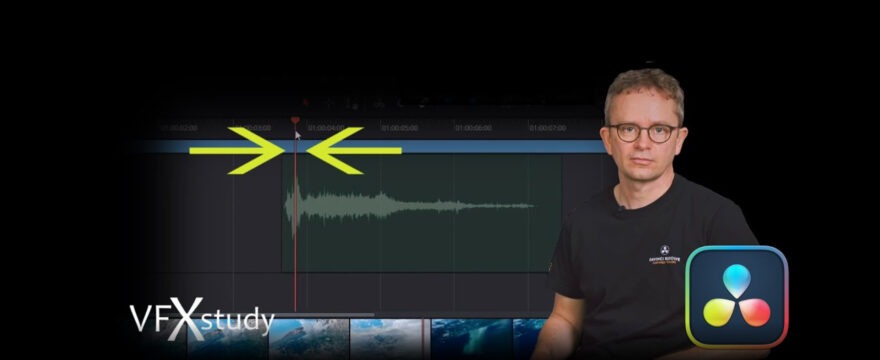Synchronizing sound effects with video is a key part of post-production, but doing it efficiently can make all the difference. While many editors are used to syncing on the Edit page of DaVinci Resolve, Fairlight offers a range of powerful tools for more precise and professional audio alignment. In this tutorial, DaVinci Resolve Fairlight trainer Gavin Lucas demonstrates several advanced techniques to streamline your sound syncing workflow.
Using Scrollbars for Precise Sync
The tutorial starts with a practical example: syncing a gunshot sound in a dramatic scene. Instead of relying on visual cues alone, Gavin uses Fairlight’s audio and video scrollers to align the sound accurately with the existing prop sound recorded on set. Keyboard shortcuts for nudging audio frame by frame, or even with sub-frame accuracy, help to get the perfect sync quickly.
Syncing with the Sound Library and Auditioning
In another example, Gavin demonstrates how to sync a splash sound with someone jumping into water, using the Fairlight Sound Library:
- First, he shows how to install and activate the free sound library from Blackmagic Design.
- He then explains how to search and preview sounds within Fairlight.
- The audition feature allows syncing the library sound to a specific timeline position without committing immediately—great for experimenting with different effects before confirming.
Using sync points in both the audio sample and the timeline, you can quickly match peaks, such as the loudest part of a splash, to the exact video frame where a jump occurs.
Enhancing Sound with Pitch and EQ
After syncing, Gavin dives into simple sound design to make effects more believable:
- For the underwater portion of the splash, he lowers the pitch and applies an EQ filter to reduce high frequencies, simulating the muffled acoustics of underwater audio.
Ghosting and Copy-Paste Syncing
Finally, Gavin shares a lesser-known technique: using Fairlight’s waveform ghosting for syncing:
- After cutting or copying a clip, the ghosted waveform follows the playhead, making it easy to align visually with other audio events.
- Once positioned correctly, pasting the clip locks it into place—handy when reusing effects or moving them across complex timelines.
Conclusion
Gavin’s practical walkthrough reveals how Fairlight offers more than basic audio editing—it’s a toolkit for precise, efficient, and professional sound syncing.
And if you’re looking for more in-depth learning, check out Gavin’s full Fairlight course. Stay tuned for the next tutorial, where he’ll explore Elastic Wave synchronization and advanced sound design techniques.



Hi Bernd and Garvin,
Thanks for the great tutorials!!!
Can someone please tell me why the hotkeys , + . move the timeline cursor in Fairlight but don’t move the sample by one frame? As shown in the video at 8:15.
The commands in the menu Trim / Nudge / … works, but unfortunately not with the hotkeys. I am using the DaVinci Resolve keyboard layout and the hotkeys , + . are also displayed in the Nudge menu.
Thanks and Cheers Andreas!
Hi Andreas,
that sounds very strange. I just cross-tested it again on my system with the standard layout and everything works like shown in the video.
I assume there is something that is interfering somehow. To be honest, there are sometimes some quirks when using “not english” keyboard-layouts with resolve. If you contact me directly, i can take a look at your configuration, if you like.